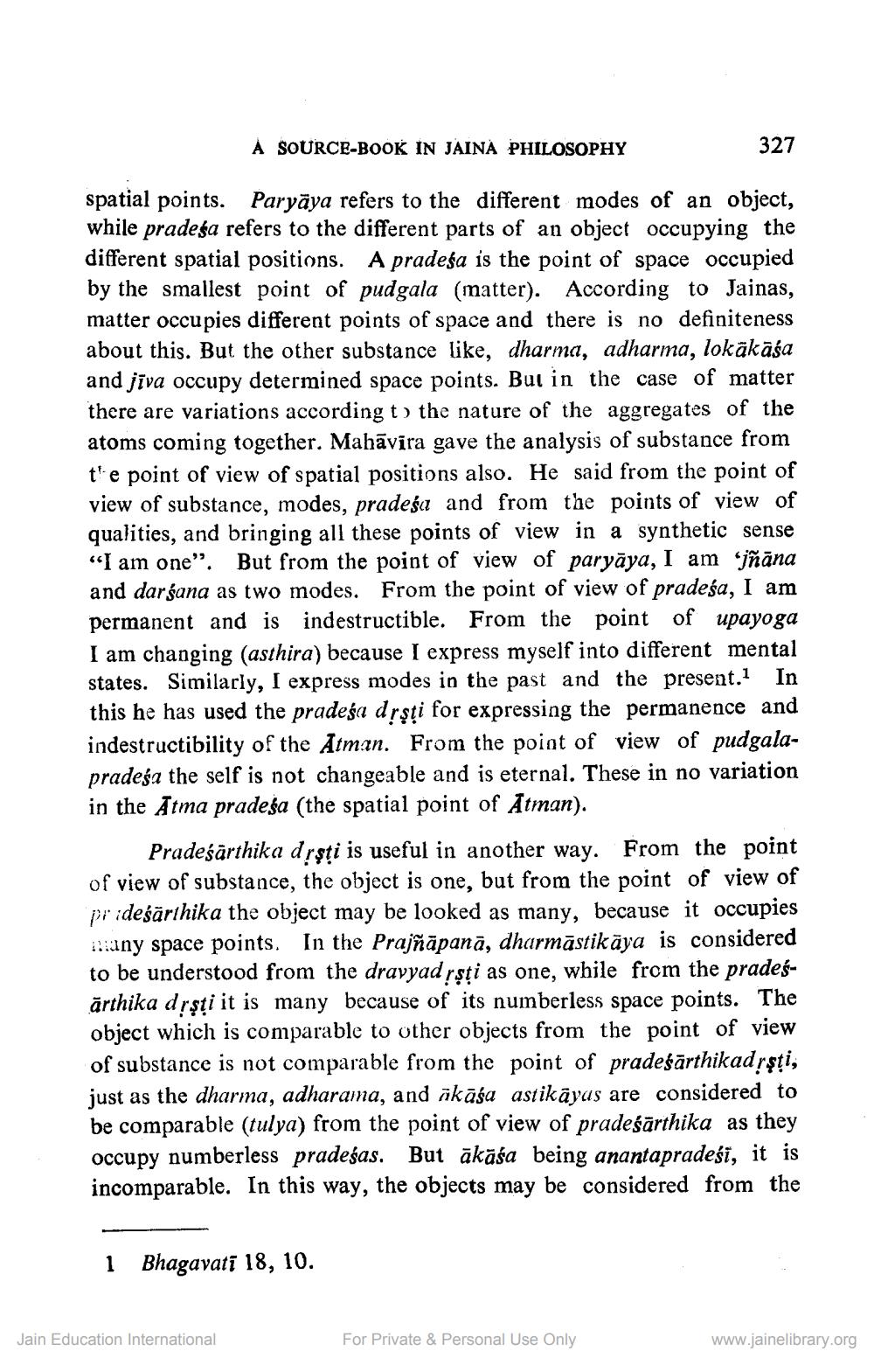________________
À SOURCE-BOOK IN JAINA PHILOSOPHY
327
spatial points. Paryāya refers to the different modes of an object, while pradega refers to the different parts of an object occupying the different spatial positions. A pradeśa is the point of space occupied by the smallest point of pudgala (matter). According to Jainas, matter occupies different points of space and there is no definiteness about this. But the other substance like, dharma, adharma, lokākāśa
d jīva occupy determined space points. But in the case of matter there are variations according t) the nature of the aggregates of the atoms coming together. Mahāvīra gave the analysis of substance from the point of view of spatial positions also. He said from the point of view of substance, modes, pradeśa and from the points of view of qualities, and bringing all these points of view in a synthetic sense “I am one”. But from the point of view of paryāya, I am jñāna and darśana as two modes. From the point of view of pradeśa, I am permanent and is indestructible. From the point of upayoga I am changing (asthira) because I express myself into different mental states. Similarly, I express modes in the past and the present. In this he has used the pradeśa drşți for expressing the permanence and indestructibility of the Atman. From the point of view of pudgalapradeśa the self is not changeable and is eternal. These in no variation in the Ātma pradeśa (the spatial point of Atman).
Pradeśārthika drști is useful in another way. From the point of view of substance, the object is one, but from the point of view of prideśārıhika the object may be looked as many, because it occupies many space points. In the Prajñāpanā, dharmāstikāya is considered to be understood from the drayyad rşți as one, while from the pradesārthika drșți it is many because of its numberless space points. The object which is comparable to other objects from the point of view of substance is not comparable from the point of pradeśārthikadrsti, just as the dharma, adharama, and äkāśa astikāyas are considered to be comparable (tulya) from the point of view of pradeśārthika as they occupy numberless pradeśas. But ākāśa being anantapradesi, it is incomparable. In this way, the objects may be considered from the
i
Bhagavatī 18, 10.
Jain Education International
For Private & Personal Use Only
www.jainelibrary.org




